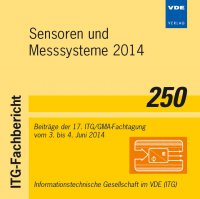Consistent Quality Evaluation Method for Shape Sensors based on FBG - Optical Fibers Used in Minimally Invasive Surgery
Konferenz: Sensoren und Messsysteme 2014 - Beiträge der 17. ITG/GMA-Fachtagung
03.06.2014 - 04.06.2014 in Nürnberg, Deutschland
Tagungsband: Sensoren und Messsysteme 2014
Seiten: 6Sprache: EnglischTyp: PDF
Persönliche VDE-Mitglieder erhalten auf diesen Artikel 10% Rabatt
Autoren:
Pauer, Hendrikje; Ledermann, Christoph; Woern, Heinz (Institute for Anthropomatics and Robotics - Robotics and Automation Lab (IPR), Karlsruhe Institute of Technology, Karlsruhe, Germany)
Tuschmann, Wilderich (Institute for Algebra and Geometry - Research Group Differential Geometry, Karlsruhe Institute of Technology, Karlsruhe, Germany)
Inhalt:
Shape sensing is a field of study with growing interest. In minimally invasive surgery, flexible medical instruments need to be tracked and the position and orientation of the manipulator tool at the instrument tip have to be detected. This can be realized via integrated shape sensors. Sensor use in the field of medicine calls for sensors with high levels of accuracy. To accurately assess sensor quality, and to compare different types of sensors, uniform evaluations must be done. Based on that evaluation, shape sensores can than be optimized and a sufficiently precice sensor device can be reached. A specific set of guidelines determining how to assess collected data is needed to allow an accurate assessment of shape sensor quality. The evaluation must be adjusted to correlate with the application, the sensor is supposed to be used for. Quality data needs to be gathered to compare different aspects of sensor efficiency and to evaluate the sensor on various performance criteria. Gathering the required data needs to be done without great effort using consistent procedures and tests, to allow for direct comparison of the achived results. The goal is to be able to describe the quality of a sensor using a scalar quantity, so that the sensor quality can be ordered on a quantitative interval scale. A concept of a uniform evaluation of this kind is not yet known. A new method of evaluation will be introduced and discussed in this paper. This method consists of measuring data where the data is gathered with a specific shape giving device. This data collecting is supported by a software tool to simply implement the procedure. Another part of the evaluation method is a quantitative and qualitative assessment of the quality by analyzing the collected data. This way, shape sensors can be compared and optimized with regard to different hardware and software components. Using the presented method shape sensors can be continuously optimized and applied to detect deformations of high complexity.


